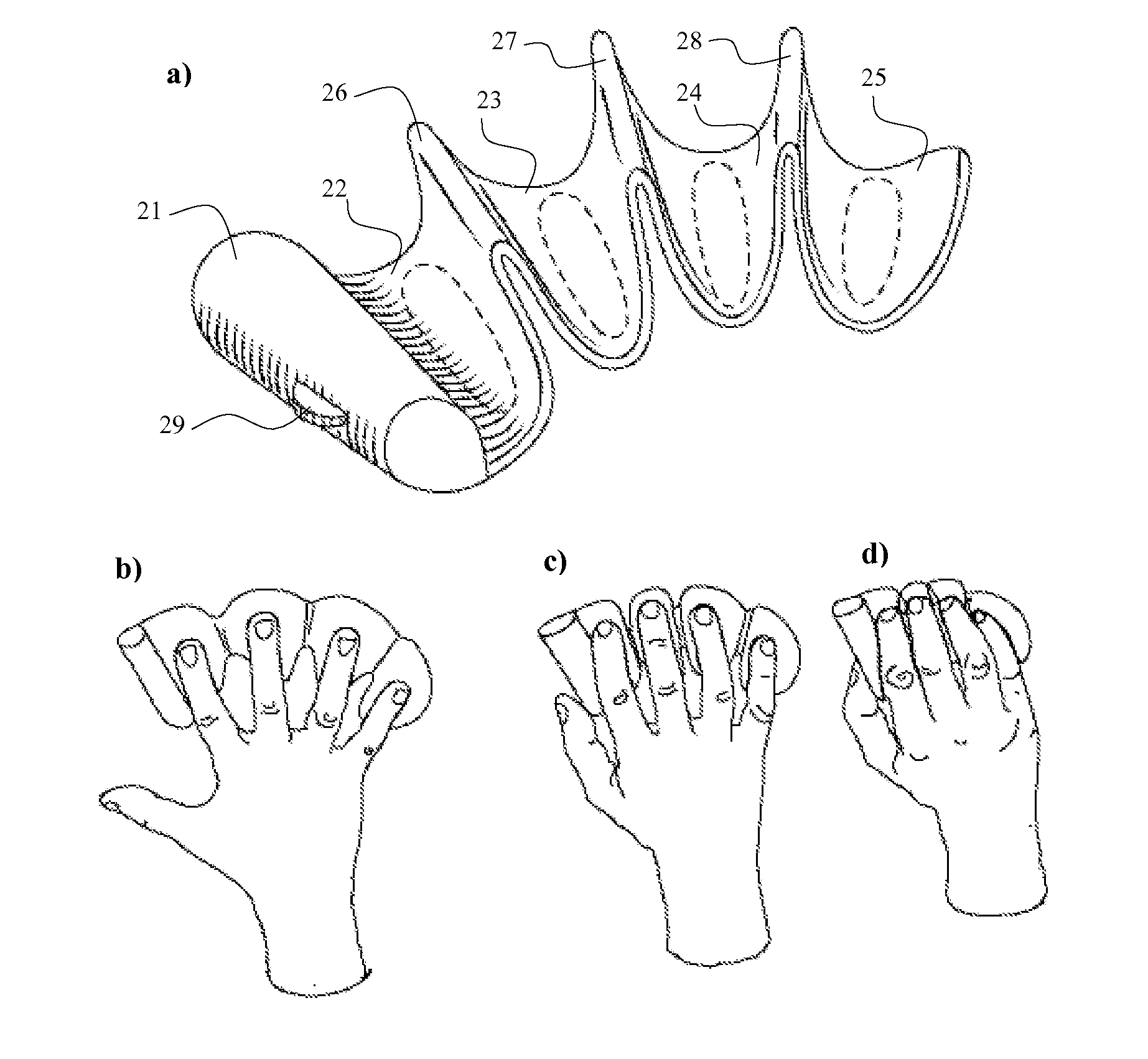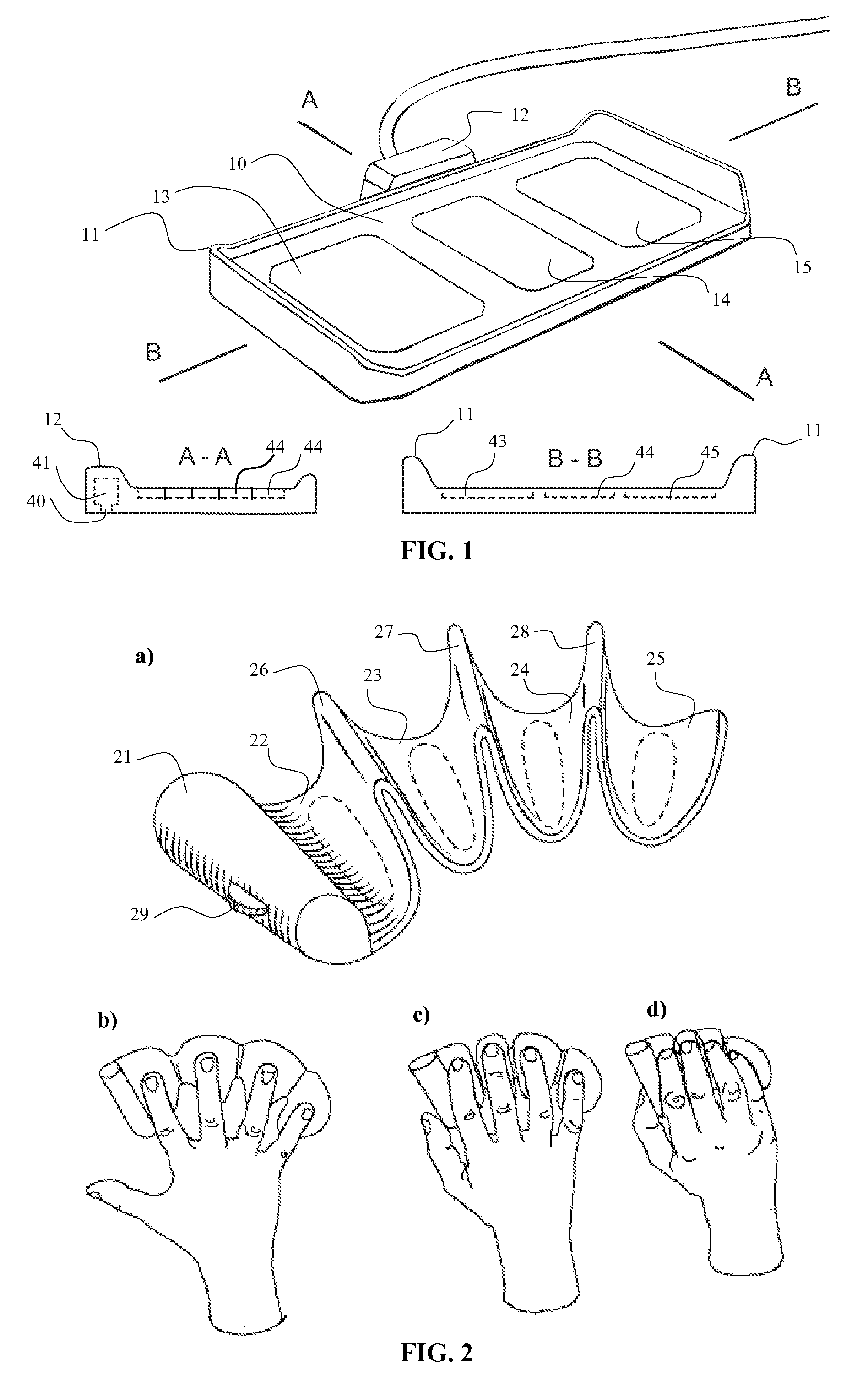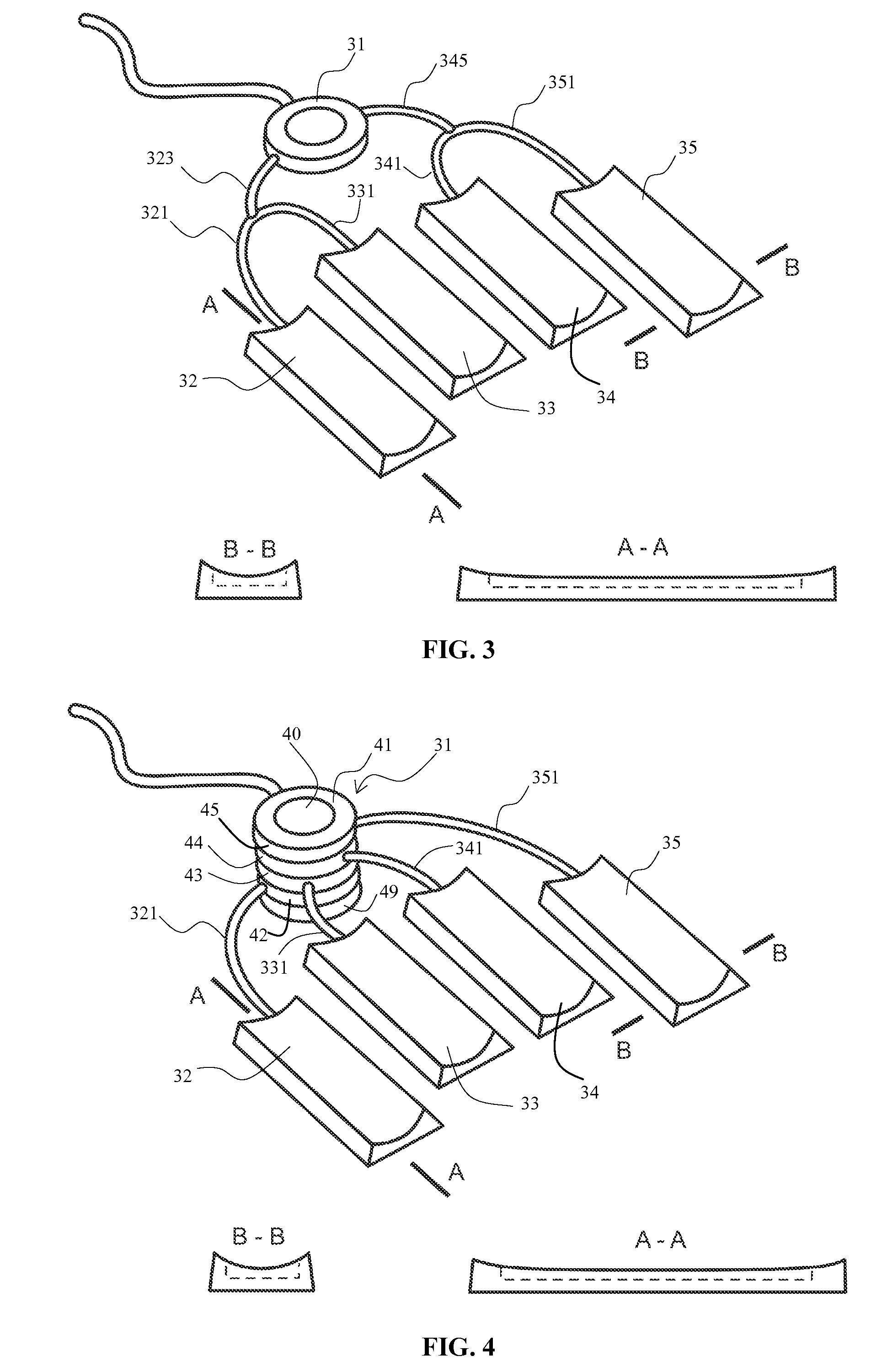Ergonomic cursor control device that does not assume any specific posture of hand and fingers
a cursor control and hand technology, applied in the direction of instruments, electric digital data processing, cathode-ray tube indicators, etc., can solve the problems of repeated strain injury when using conventional computers, strong above-mentioned syndrome, and user experience significant discomfort in hand, etc., to achieve enhanced functionality, easy-to-recognize the effect of the user, and enhanced functionality
- Summary
- Abstract
- Description
- Claims
- Application Information
AI Technical Summary
Benefits of technology
Problems solved by technology
Method used
Image
Examples
first embodiment
[0042]With reference to the attached FIG. 1, a first embodiment of the present invention will be now described. On FIG. 1, a mouse-type cursor control device is shown having a shape of a generally flat plate with a slightly elevated border or rim 11. The general view is accompanied with the A-A and B-B cross-sections of the device. The whole upper surface of the device presents one multi-finger support area 10 large enough for accommodating up to four fingers of user's left or right hand, or even all the five fingers including the thumb.
[0043]Typically, however, the user will place only three fingers on this support area, namely the index, the middle finger and the ring finger, while hanging the thumb and the little finger in the air, or placing one or both of them on the rim 11, or else, firmly placing them on the working surface at both sides of the device in order to achieve more precise small movements of the device by the longer three fingers.
[0044]The inventive device shown on...
second embodiment
[0060]Four alternative embodiments of the present invention will now be described with reference to FIGS. from 2 to 5 respectively.
[0061]The second embodiment is shown on FIG. 2a. FIGS. 2b to 2d show typical positions of an operator hand on the device. The inventive device is implemented here as a goffered plate, with its upper surface presenting a succession of four oblong “grooves” (22 to 25), with elevated elastic “rims” (26 to 28) separating adjacent grooves. Every groove accommodates one finger, from the little finger on the right to the index on the left; the device is hence asymmetric, presented here in a right-handed version.
[0062]On the left of the index groove there is a bolster 21 for placing the thumb on it; this bolster may accommodate electronic components of the device, and also a power supply battery in a wireless version of the device, as the one shown on FIG. 2. The motion detector may be placed on the bottom side of the bolster, or alternatively on the bottom side...
PUM
 Login to View More
Login to View More Abstract
Description
Claims
Application Information
 Login to View More
Login to View More - R&D
- Intellectual Property
- Life Sciences
- Materials
- Tech Scout
- Unparalleled Data Quality
- Higher Quality Content
- 60% Fewer Hallucinations
Browse by: Latest US Patents, China's latest patents, Technical Efficacy Thesaurus, Application Domain, Technology Topic, Popular Technical Reports.
© 2025 PatSnap. All rights reserved.Legal|Privacy policy|Modern Slavery Act Transparency Statement|Sitemap|About US| Contact US: help@patsnap.com



